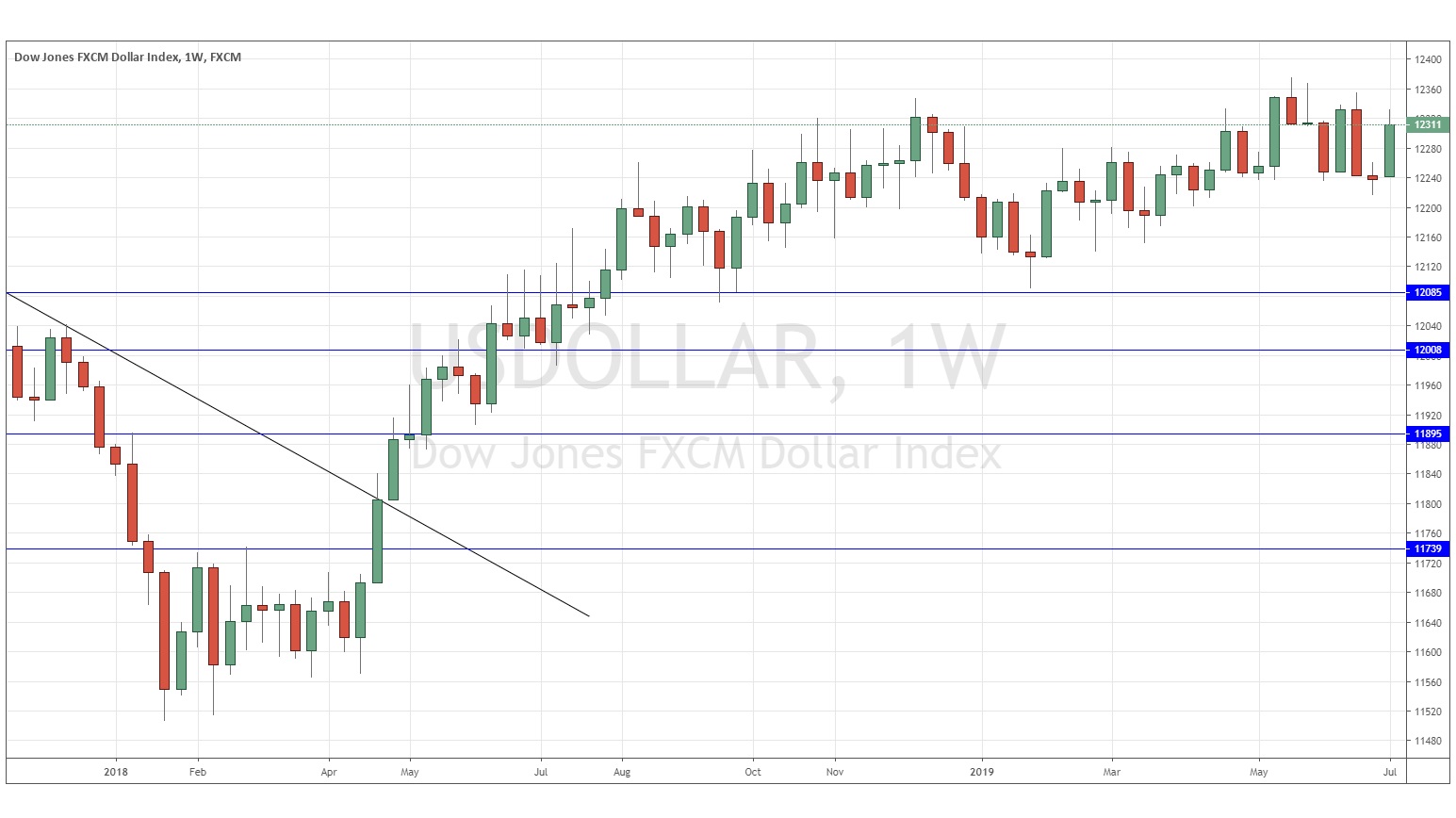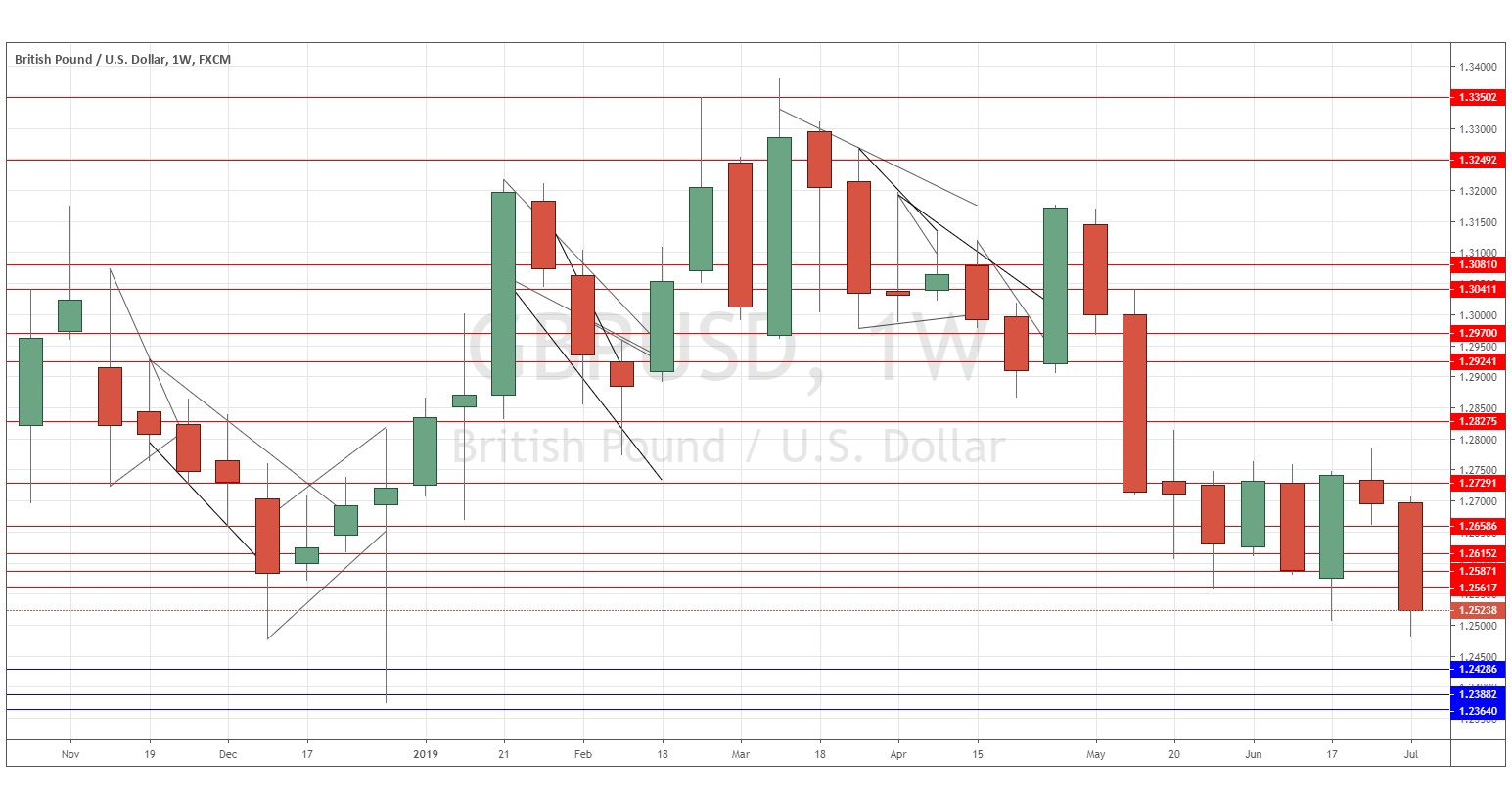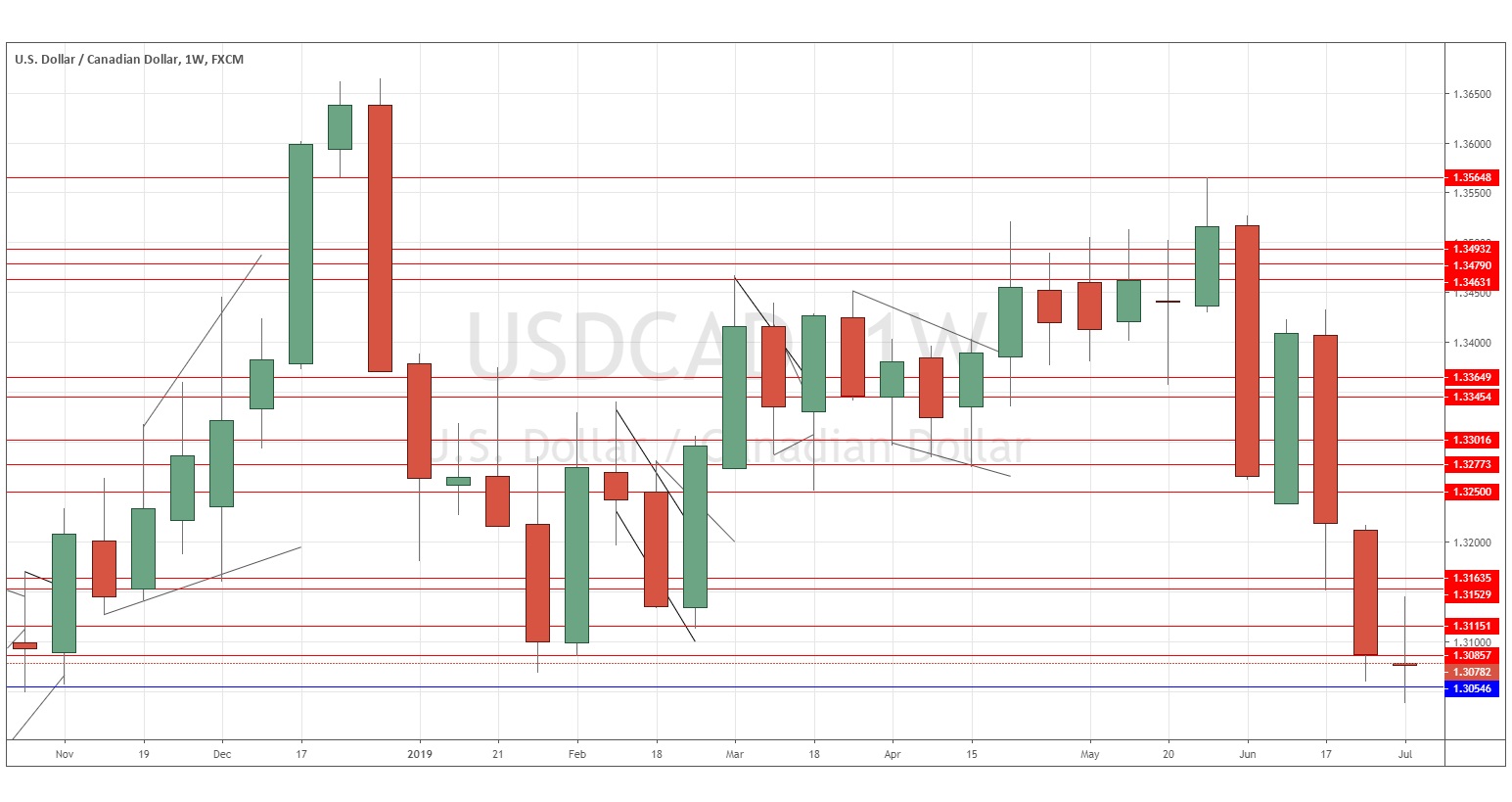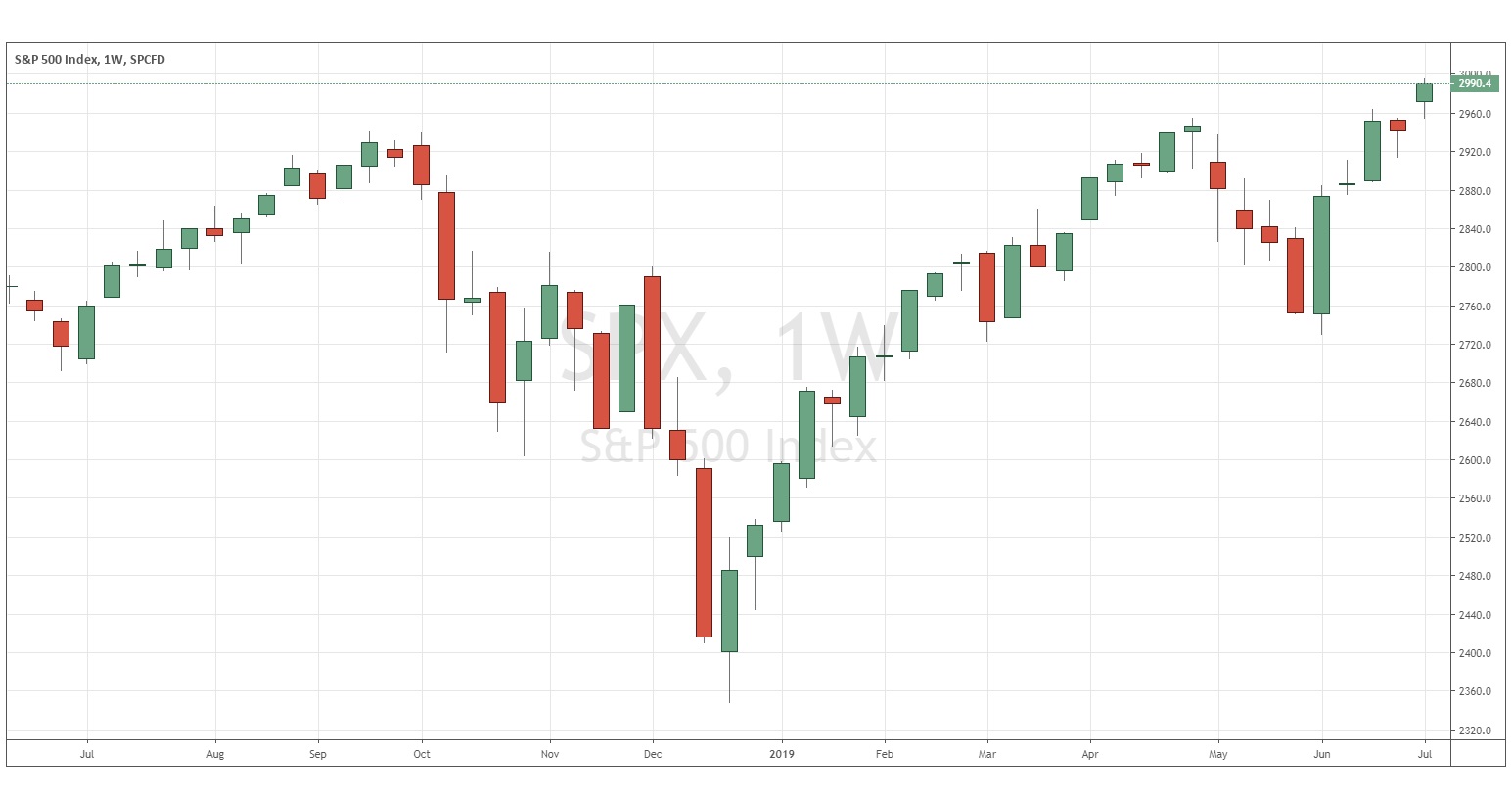The difference between success and failure in Forex trading is very likely to depend upon which currency pairs you choose to trade each week, and not on the exact trading methods you might use to determine trade entries and exits. Each week I am going to analyze fundamentals, sentiment and technical positions in order to determine which currency pairs are most likely to produce the easiest and most profitable trading opportunities over the next week. In some cases it will be trading the trend. In other cases it will be trading support and resistance levels during more ranging markets.
Big Picture 7th July 2019
In my previous piece last week, I forecasted that the best trade would be short USD/CAD. This currency pair fell by 0.07%, giving a very small win for the week.
Last week’s Forex market saw the strongest rise in the relative value of the U.S. Dollar, and the strongest fall in the relative value of the New Zealand Dollar.
Last week’s market was dominated by generally improved risk sentiment and quite strong U.S. jobs numbers. This has boosted the U.S. Dollar and pushed the U.S. stock market to new all-time high prices.
The Forex market was less active last week, with only the Canadian and Australian Dollars showing strength against the U.S. Dollar.
This week has a news agenda which will probably make more of an impact than last week’s, so we may well see greater movement in the markets over the coming days than we did last week.
Fundamental Analysis & Market Sentiment
Fundamental analysis now sees the Federal Reserve as more likely to cut rates over the near to medium term as the headline strong new jobs number masked a deeper picture of slowing growth. Despite that, the economy is still growing quite strongly, and the U.S. stock market is making new all-time high prices.
Market sentiment is more risk-on now and the long-term bullish trend in the U.S. Dollar seems to be intact.
Technical Analysis
U.S. Dollar Index
The weekly price chart below shows that last week the USD Index rose, printing a relatively large bullish candlestick which closed not far from its high. The price is up over both 3 months and over 6 months, indicating a bullish trend. This trend has slowed considerably into a near-consolidation over recent months but remains intact now.
GBP/USD
The weekly chart below shows last week saw this pair print a strongly bearish candlestick, which closed at a 2.5-year low on above-average volatility – these are bearish signs. The only bullish factor is that big round number at 1.2500 continuing to hold up, so traders may wish to wait for the price to get below that level before entering any new short trade here. The Pound’s decline is supported by fundamental factors, most notably the strong likelihood that the U.K. will have a firmly pro-Brexit Prime Minister another two weeks from now.
USD/CAD
The weekly chart below shows last week saw this pair print another bearish candlestick, which is close to a pin candlestick – this is a bearish sign. Although the weekly close was the lowest for eight months, it is concerning that the long-term support at 1.3054 has continued to hold. For this reason, I would only take a bearish bias here if the price breaks below last week’s low and holds there for a couple of hours.
S&P 500 Index
The weekly chart below shows that last week printed a bullish candlestick which closed very near its high, at an all-time high weekly closing price. These are bullish signs; however volatility was low and the big round number of 3000 is just ahead of the current price, which suggests that bulls might want to be at least a little cautious here.
Conclusion
This week I forecast the best trades will be long S&P 500 Index and short GBP/USD, and short USD/CAD below last week’s low price.





